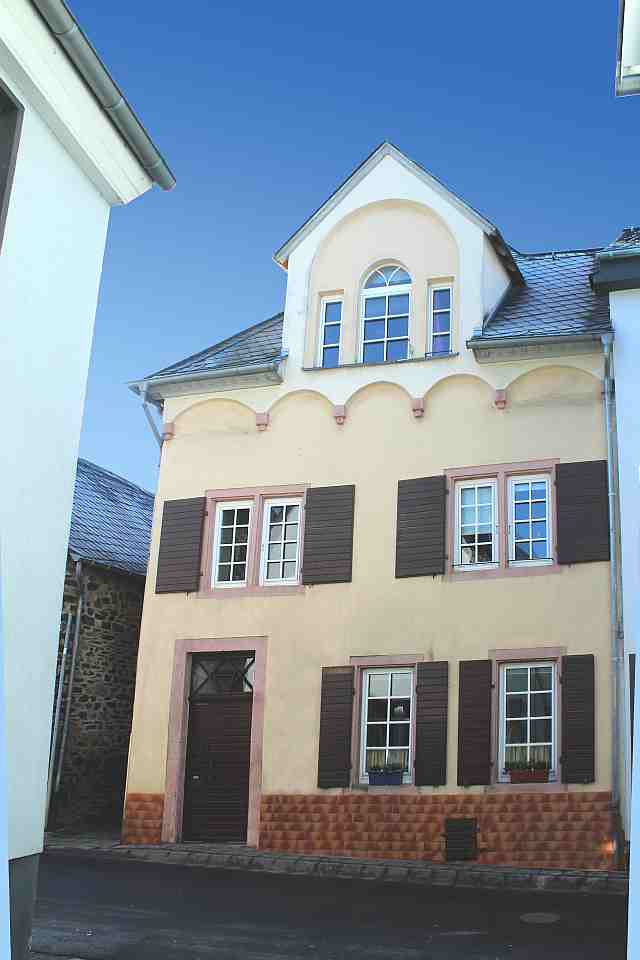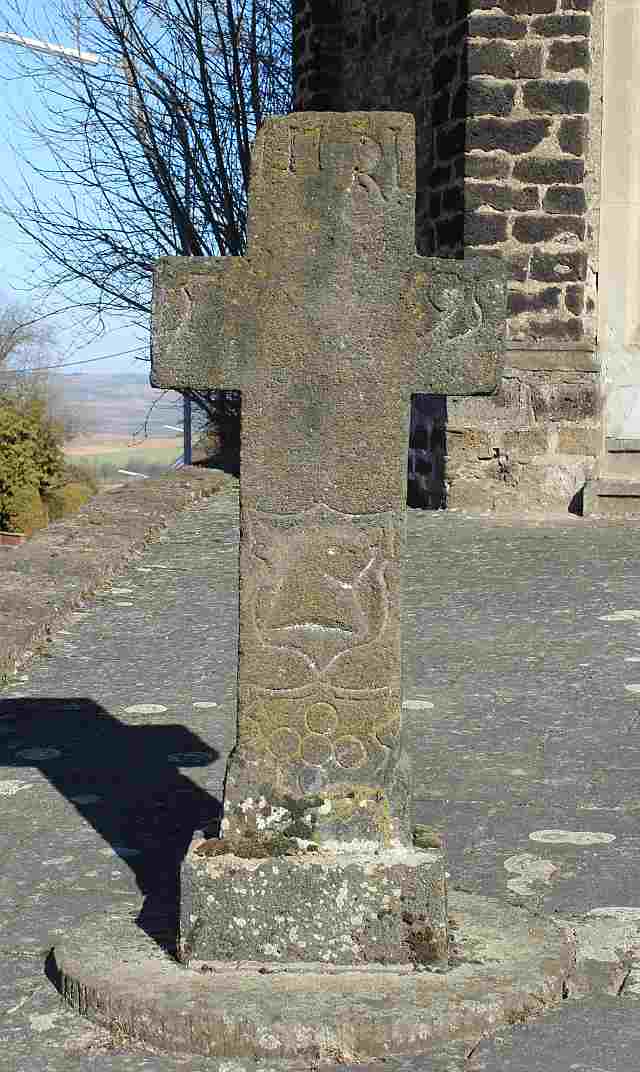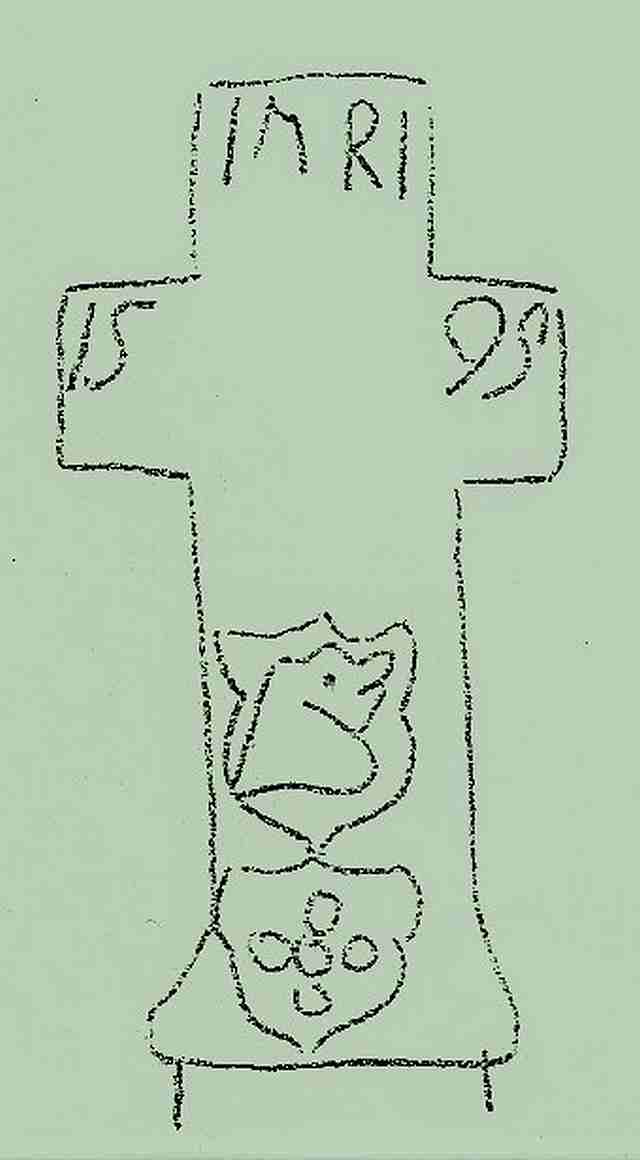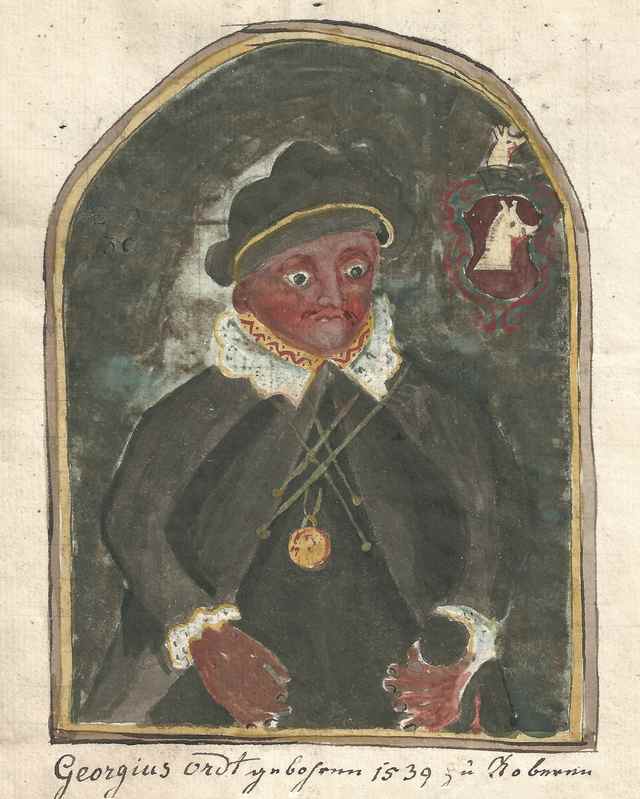13. Ordt'sches House
Presumably built in the 14th century
Also known as "Wirtz’sches Haus".
In the 19th century used as accomodation
on the road. Commonly known as
"Alte Herberge".
The house, also referred to as Wirtz'sches house, is one of the oldest houses in the city. It is one of the 6 private houses that survived the devastating city fires of 1689 and 1691. The house was inhabited by officials of the city, of the archbishop and also of the emperor in Vienna from the middle of the 16th century until the middle of the 18th century. The prestige these families enjoyed in the city was confirmed by the house names. In the 19th century, craftsmen used to live in the house. Based on narratives, journeymen on the tramp were offered accommodation there. Another house name "Alte Herberge” (Old Hostel) is a reminder of this time.
The house is situated directly along the former city wall.

The core of the late Gothic building was originally gabled. In 1830, the gable was redesigned with a mansard roof on the street side. This house is one of the 6 private houses that survived the pillaging by the Marshal de Boufflers in 1689 and 1691. The electoral "Kellner" Otto Ordt bought this house in 1543.
With him began a succession of distinguished families as residents of the house.
Otto's son, Georg Ordt, was a lay assessor at the high court in 1571 and mayor of the town in 1574. He died in 1619 as the "Ehrenfeste Georg Ordt". A basalt cross in front of the Holy Trinity Chapel still commemorates him today. It belonged to the four "Landsegnungen" (blessings of the land) in front of which processions stopped and the blessing was given over the land and its people.
The cross shows a pig's head on a coat of arms shield, below a coat of arms shield with 5 rings in the shape of a cross with the year 1595.


The pig's head refers to the Ordt family and their origin from Wittlich, the 5 rings to the Philippi family, from which the wife came. The chronicler Büchel had made a drawing of Georg Orth as mayor in 1821.

The pig's head refers to the Ordt family and their origin from Wittlich, the 5 rings to the Philippi family, from which the wife came.The chronicler Büchel had made a drawing of Georg Orth as mayor in 1821.
It shows him with the chain around his neck as a sign of his official dignity, in the upper part on the right the family coat of arms. A son of Georg Ordt, of the same name, who was a canon and custodian in the collegiate church, sold the house in 1626. After that, the Ordt family is no longer traceable in Münstermaifeld.
Hermann Wirtz had lived in the house since 1644. As "Schultheiß", he too was a representative of the families of Münstermaifeld who belonged to the patriciate through their service to the archbishop, the monastery and the town. As a rule, their advancement was connected with studies. We meet his son Hermann in 1656 in Speyer at the imperial chamber court, where he was admitted as a notary. The career of his grandson Franz took him even further afield, where he worked as "Imperial Chamberlain" at the court in Vienna.
In the following period, the estate became the property of the notary and alderman Robert Dietzler. He had been head of the collegiate school since 1717. With his marriage in 1721, he gave up the office. His daughter Catharina married the tobacco spinner and innkeeper Jakob Richter in 1752 and continued to live in the house with her family.
With the end of the electorate and the monastery, the livelihood of part of the town's leading families also came to an end. The social decline of the house's inhabitants took place over three generations. In 1815 Büchel wrote about Johannes Richter, the grandson of Catharina Dietzler: "Does nothing the first time, consumes his and his wives' fortune with pure indolence and laziness".
After 1815, the house passed to the mason Josef Kern, and after him to the carpenter Michael Welling. In memories and stories, Ordt's house was also referred to as the "old inn". This referred to wandering journeymen who found accommodation here "on their journey" ("Walz").
Glossary
Chamber Court
From its foundation in 1495 until 1806, the Imperial Chamber Court was the highest court of the Holy Roman Empire. Its task was to replace feuds, violence and war with a regulated procedure for settling disputes. At first, the court had its seat in Frankfurt am Main. From 1527 it was based in Speyer and after its destruction as a result of the Palatinate War of Succession from 1689 to 1806 in Wetzlar.
to top
"Kellner"
He was responsible for the administration of monetary and in-kind dues to the sovereign.
Custodian
He kept the seal and the keys of the monastery. He was also responsible for logistics. He saw to it that there were enough candles in the church and procured the hosts and incense. He supervised the bell-ringers and kept the necessary bell ropes ready.
Canon
The governing body of the monastery was the chapter, the assembly of the canons. Numerous conditions had to be fulfilled to become a full member. Ordination to the priesthood was not one of the requirements for admission to the chapter. The canon's official position was called prebend or prebend. The number of resident canons varied between 12 and 16. Only members of the chapter could become holders of special dignity and responsibility, such as dean. Recommendations for admission as canons came from the archbishop, the pope or even the king.
"Schultheiß"
The Schultheiss represented the interests of the local sovereign. This was also the case in the town of Münstermaifeld. He made sure that the sovereign's orders were carried out. His duties included the management of the town's college of aldermen.
"Walz"
Rolling here means to move about. Since the late Middle Ages, it has meant the years of travel that a journeyman had to prove in order to become a master craftsman. This requirement disappeared with the end of the guilds and with industrialisation.
Büchel
On the life of Johann Büchel V. (1754-1842) see Büchel House. He is to be presented here with his work as a chronicler. He held a wide variety of municipal offices. He was well informed and had access to sources that no longer exist today, dating back to the 16th century. In his biography, which he began in 1828, he lists 58 titles of his manuscripts. Among them are the 12 chronicle volumes that are indispensable for researching the history of Münstermaifeld and the Maifeld. They were written between 1811 and 1828.



